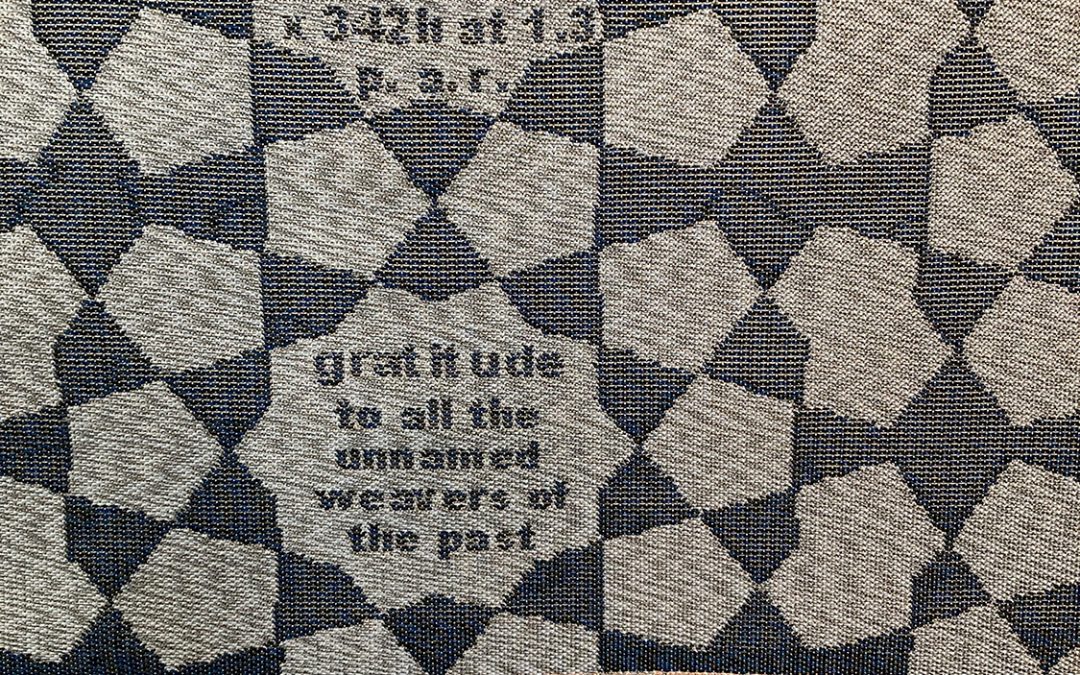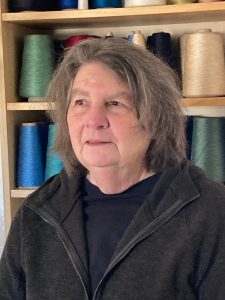 NAME: Bhakti Ziek
NAME: Bhakti Ziek
BACKSTORY: Bhakti is well-known for her wonderful jacquard weaving and that is how I first came into her sphere of influence. Together with Alice Schlein, she produced the amazing The Woven Pixel: Designing for Jacquard and Dobby looms using Photoshop. That book has been invaluable to many of us aspiring jacquard weavers and my copy is well worn with many pink post-it notes highlighting the bits that I use most when designing for my ancient sample jacquard handlooms. Bhakti has been commissioned for prestigious locations and her ‘Stardust’ series was videoed, a link is provided at the end. Happily for many jacquard learners, Bhakti offers private classes on jacquard weaving and other weaving processes. She is currently working on a series called An Encyclopedia of Weaving. Started many years ago, it continues in her new studio in Santa Fe, NM.
Here is how she found her way to weaving:
HOW I GOT INTO WEAVING:
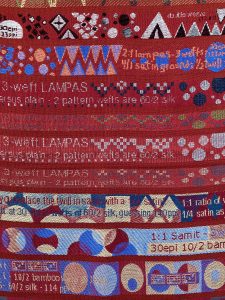
I was 22 years old, finished with college, and living in NYC. This was 1969 and I wanted to live on a commune. I talked endlessly about “my land,” but when people asked me where it was I didn’t have an answer. However, I was confident that it would happen, and in preparation I decided to gain some skills that would make me a useful member of the commune. So I signed up for ceramics at Baldwin Studio in the Village, and for weaving at the Craft Students League in mid-town.
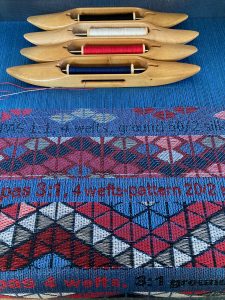
Several friends joined me in the weaving class. The first day our teacher (Claire Freedman) asked us what we wanted to make. My friends all had projects (a shawl, upholstery, something else I can’t remember) but I said, “I want to learn how to make everything.” So as they struggled with projects that they didn’t understand (none of them continued past that class), I made samplers of twills, rya knots, tapestry, double cloth, overshot and other structures. I can’t say I understood either—that took many years of weaving before the light turned on—but I was hooked, and I believe the ethnographic textiles that were on the walls in that studio led me to Guatemala, where I learned backstrap weaving and brocade from several Mayan weavers.
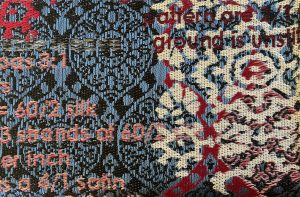
That in turn led to the work I did when I returned to school for a BFA in textiles, which led to the next step (a year of work for Jack Lenor Larson), and the next (my MFA from Cranbrook Academy of Art) and the next (college teaching) and the next. It is all one connected web of learning and today I am intrigued that I still consider my studies, my samplers, to be my most precious work. Of course there have been times when I have put it all together to make mature work (see the video on my installation, Stardust, woven for Whitman College at Princeton University), but weaving remains a place where I can always discover a new door to open, a fresh path to follow. I never got to that commune, but that dream gave me weaving, which I consider my lifeline.
WEBSITE: bhaktiziek.com VIDEO ON STARDUST: http://www.youtube.com/watch?v=3KBy3oaEQDU
EMAIL: bhaktiziek@gmail.com
IMAGES: Feature: Detail of 2018, 44”h x 14”w, 2018, silk and metallic yarns, handwoven jacquard weaving using damask, taqueté, samite and lampas weave structures; Top: detail of Red Ground, 37”h x 26”w, 2020, bamboo and silk yarns, handwoven jacquard weaving using taqueté, samite, lampas, double weave and weft-backed weave structures; Middle: detail of Ratio Tests, 36”h x 26”w, 2021, tencel and silk yarns, handwoven jacquard weaving using lampas weave structures; Bottom: detail of Ratio Tests, 36”h x 26”w, 2021, tencel and silk yarns, handwoven jacquard weaving using different lampas weave structures.
NEXT TIME: Lynn Smetko

